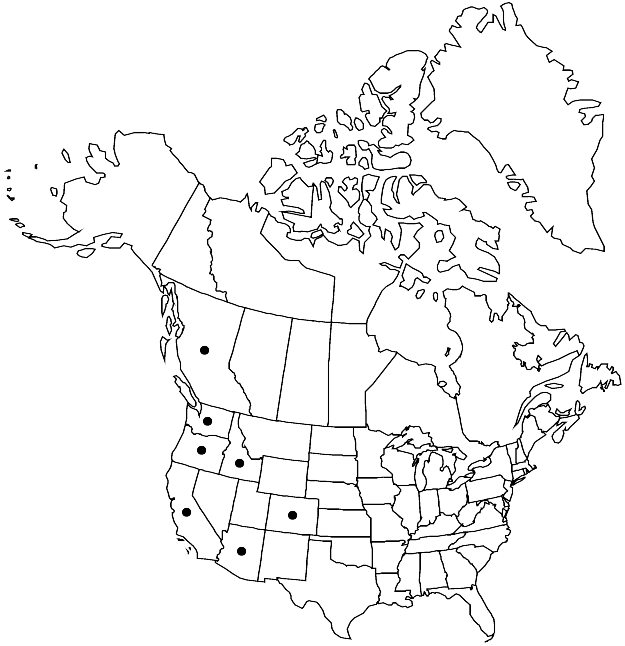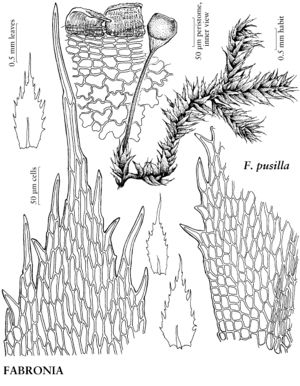Difference between revisions of "Fabronia pusilla"
Atti Accad. Sci. Siena 9: 231, plate 1. 1808.
Selected by author to be illustrated
Treatment appears in FNA Volume 28. Treatment on page 478.
FNA>Volume Importer |
FNA>Volume Importer |
||
| Line 51: | Line 51: | ||
|publication year=1808 | |publication year=1808 | ||
|special status=Selected by author to be illustrated | |special status=Selected by author to be illustrated | ||
| − | |source xml=https://jpend@bitbucket.org/aafc-mbb/fna-data-curation.git/src/ | + | |source xml=https://jpend@bitbucket.org/aafc-mbb/fna-data-curation.git/src/f6b125a955440c0872999024f038d74684f65921/coarse_grained_fna_xml/V28/V28_747.xml |
|genus=Fabronia | |genus=Fabronia | ||
|species=Fabronia pusilla | |species=Fabronia pusilla | ||
Revision as of 19:47, 24 September 2019
Leaves 0.4–0.8 mm; margins ciliate-dentate, teeth often of more than 1 cell; apex acute to long-acuminate; medial laminal cells 30–45 × 9–12 µm.
Phenology: Capsules mature late spring- summer.
Habitat: Rock, bark at base of trees
Elevation: low to high elevations
Distribution

B.C., Ariz., Calif., Colo., Idaho, Oreg., Wash., Mexico (Baja California Sur), Europe, n Africa.
Discussion
Fabronia pusilla is easily distinguished by its long-acuminate and ciliate-dentate leaves.
Selected References
None.
Lower Taxa
None.
